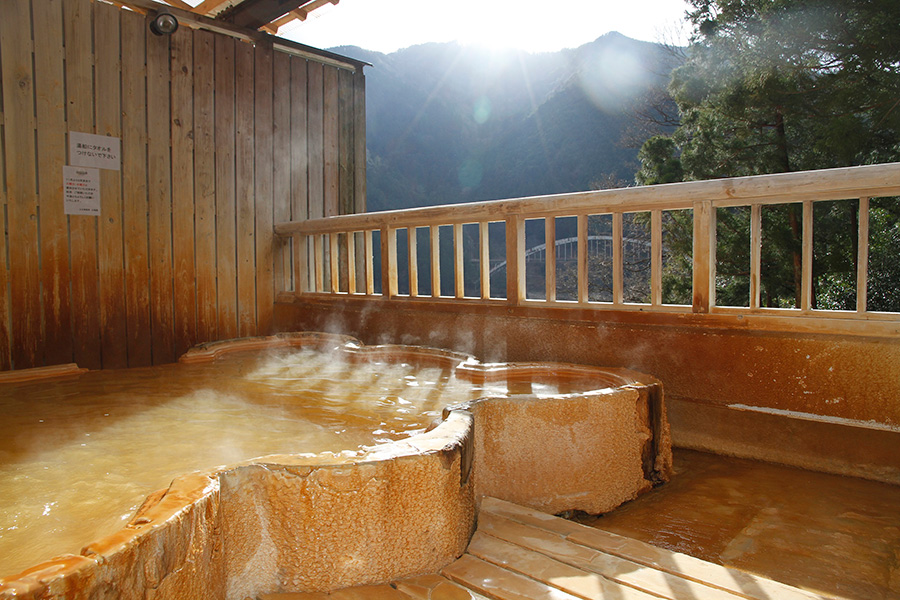Shionoha Hot Spring and Yamabato Yu

Shionoha hot spring is located at the base of a cliff near the Ōsako Dam reservoir. Its water gushes naturally from the ground at around 500 liters per minute. The spring water appears clear at first, but within a few hours, it changes to a slightly murky yellow. This is due to the high concentration of iron, which also stains the rocks surrounding the spring a rusty yellow. The presence of a spring has been recorded in the area as far back as the Heian period (794–1185), but surviving maps confirming its location date only to the Edo period (1603–1867).
Ōsako Dam was completed in 1973, submerging the original source point of the spring beneath the resulting reservoir. A local forestry family, the Nakamuras, resolved to reopen access to the spring water, and they dug down 150 meters to reach it. In 1977, they opened the Yamabato Yu Hot Spring Inn.
The bath water at Yamabato Yu is taken entirely from the hot spring at its natural temperature of 39 degrees Celsius. The baths are built of wood: hollowed-out slices of the trunks of giant zelkovas for the outdoor bath, and fence-like rows of cedar logs for the indoor baths. However, the spring waters deposit as much as 1 to 2 centimeters of minerals each year, and this has completely encrusted the wood with a mineralized surface that resembles rough ceramic.
Shionoha is a lightly carbonated sodium bicarbonate spring. In summer, the outdoor bath is well suited for a long, luxurious soak spent admiring the valley and the gracefully arcing bridge that spans the reservoir. During the day, the inn’s upstairs dining room becomes a restaurant that caters to bathers and non-bathers alike. The extensive and eclectic menu includes river fish, foraged wild greens (sansai), and wild game, including bear, duck, and sparrow.
